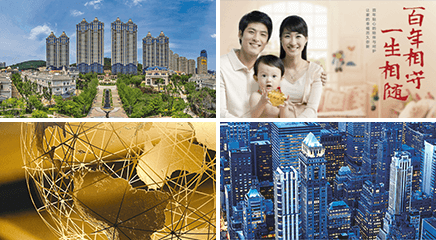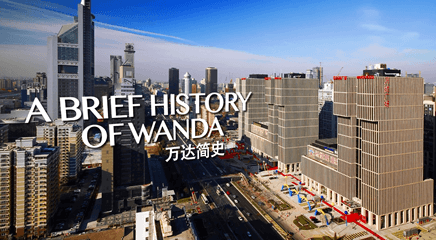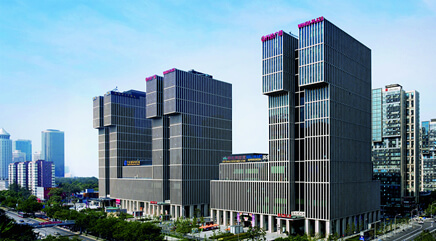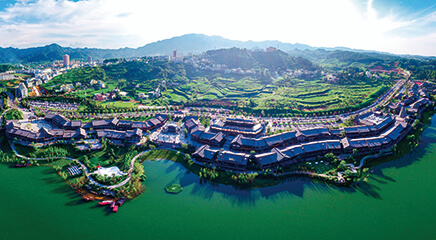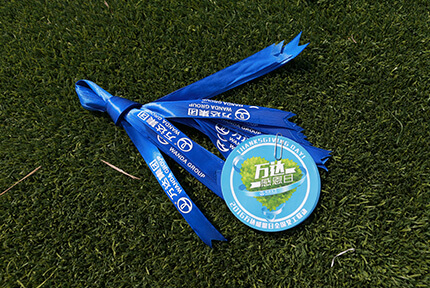Wang Jianlin talks about Wanda's fourth transformation
29.04.2015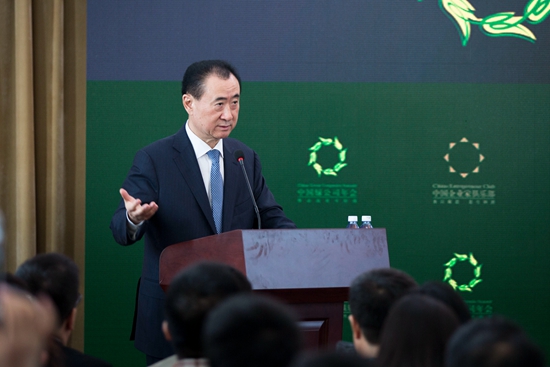 Wanda Group Chairman Wang Jianlin makes a speech at the China Green Companies Summit
Wanda Group Chairman Wang Jianlin makes a speech at the China Green Companies Summit
On 21st April 2015, Mr Wang Jianlin spoke at the China Green Companies Summit. His speech focused on Wanda Group's fourth transformation. The following is a record of his speech:
The word "transformation" is a popular phrase right now, but the truth is, the issue of structural adjustment of industries has already been brought up over a decade ago at the 13th plenary session of the 6th Central Committee. It has also been a perpetual theme in the development of enterprises. It is impossible for any kind of enterprise and any form of business model to remain the same and not be eliminated eventually. Of the top 500 companies 30 years ago, less than 20% remain among today's top 500 companies. Perhaps in another 20 years, only a few of that 20% will remain. Hence, enterprises have to adapt to change, proactively change, and be adept at changing. Our main topic today is the transformation of Wanda Group.
1) The four transformations of Wanda
The first transformation occurred in 1993, when Wanda turned from a locally-oriented enterprise into a country-wide enterprise. We stepped out from Dalian and expanded to Guangzhou, which was China's favored place for reforms. There was a popular saying at that time, "north, south, east, west and central (zhong). To find riches, go to Guangdong". It was a big step for us and took much courage. But with experiences that came with that step, Wanda expanded nationwide on a large scale in 1998.
The second transformation was in the year 2000, when focus shifted from residential properties to commercial properties. There was instability in residential properties, with cash flow present only where projects existed; once projects were completed, cash flow stopped. Furthermore, judging by global trends, in every country, the city formation process takes about half a century. Once the urbanization process is completed, the property development industry shrinks. After taking into consideration prospects for continued stable growth, Wanda decided to shift its focus to commercial property.
A third transformation took place in 2006. Instead of specializing on just the property business, Wanda took on a composite business scope covering commercial property and cultural tourism, and which revolved around immovable assets. This transformation made us change our paradigms, talent structure and management. In the past, the management of Wanda was mostly made up of people from the field of construction. After changing our business scope, Wanda attracted talents from the tourism industry and cultural fields.
The fourth transformation was implemented in 2014. This time, it consisted of two parts: In terms of space, Wanda turned from a domestic enterprise into a multi-national enterprise; in terms of business content, Wanda changed from a real-estate based enterprise into a service-based enterprise with operations in four main industries: Commercial property, cultural, finance, and departmental stores. Wanda's fourth transformation was an intense one and involved profound changes in coverage space. It differs fundamentally from the three previous transformations. Firstly, the nature of the enterprise underwent fundamental changes. Wanda remained focused on real-estate throughout previous transformations, but this time, focus shifted to services instead. Secondly, strategic targets are different. Rather than just aiming to become a leader in China, Wanda looks to become a world-class multi-national company.
2) Rationale behind the fourth transformation
1. Gaining greater competitiveness
In the past, some have likened Wanda's involvement in commercial property to the construction of a city moat. In this sense, Wanda's fourth transformation would be akin to "widening and deepening the moat" to increase competitiveness. Wanda has now taken the top spot in China in terms of immovable assets. The company opened 26 malls this year, increasing property area held by 5 million sqm, while other players in the industry typically open no more than two malls in a year. In 2015, Wanda's total property area held reached 25 million sqm, and Wanda became the enterprise with the largest total leasable property space in the world. Since Wanda implemented the asset-light business model, the growth rate of its malls increased by multiples. By 2020, the total business real-estate held or managed by Wanda will be comparable to the total held by the world's top holders of immovable assets. Wanda is set to at least eliminate competition within China.
Why did Wanda use the asset-light strategy? Wanda's heavy assets weren't doing badly – Wanda invests in itself, collects all rent and enjoys property capital appreciation. However, heavy assets are debt-heavy and cannot be developed quickly enough. Wanda has developed 109 malls, a large number for an enterprise, but far from adequate considering China's market of 1.4 billion people. To gain a greater edge, we have to penetrate third and fourth-tier cities where others dare not venture, spreading through cities of all sizes in China and taking control of all physical commercial space. Wanda's strategy of expanding into other industries like culture, tourism, sports etc. do not just serve to increase its competitiveness, but aims to eliminate competition as well.
2. Freedom from the effects of economic cycles
Economic ups and downs are inevitable in economies throughout the world and nobody can stop them. China is currently facing a downward cycle that began in 2013, and despite RRR cuts, there has been no significant improvement. This shows that the current cycle is not over and the downturn is still the dominant force. Economic cycles deliver fatal blows to cyclical industries, and real-estate is a typical cyclical industry. When a negative cycle hits the economy, property becomes very difficult to sell no matter how sellers lower prices; the property buyer-mentality is to buy in a rising market. China's real-estate market went through two downturns in 1993 – 1995 and 2007 – 2008, during those times survival became extremely difficult for enterprises. Wanda underwent transformation to make itself immune to economic cycles. In its asset-light business model, Wanda's mall developments use investment funds from institutional investors or funds raised through investment products. With no property purchases involved, and with Wanda's mall business being cycle-resistant because it targets mass consumers, the performance of Wanda's mall investments has little to do with the rise and fall of property prices. This is how Wanda avoids being affected by economic cycles.
Why did Wanda go into the cultural industry and sports industry? The cultural industry in the US accounts for 24% of GDP. US top exports are not weapons and passenger planes, but cultural products, which include movies, music, comics and book copyrights etc. Currently, the cultural industry in China accounts for just 3% of GDP. In 2014, the size of the American sports industry was close to USD 500 billion. In contrast, China's sports industry has yet to be developed. Its related industries, like sportswear and shoes, total only about RMB 300 billion, one-tenth that of the Americans. The average per-capita spending on sports in the US is fifty times higher than in China. The cultural and sports industries in China are just starting to take off, and there is huge space for future development. In addition, these industries are not prone to the effects of economic cycles. Sometimes, the consumption of sports and cultural products actually increase during economic down
